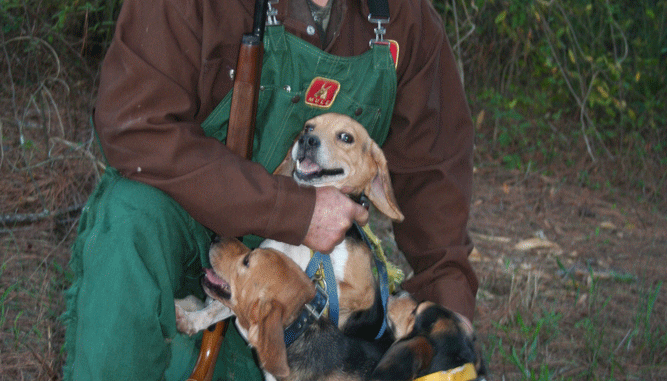
Good dogs and good habitat are key components to good rabbit hunting and the accompanying good times.
Some things go together so effectively that one without the other leaves one feeling less than satisfied.
So it is with rabbit hunting. You can hunt rabbits without beagles, but the little hounds are the element that completes the hunt and makes it so much more fulfilling. You might say that a good pack of beagles is the straw that stirs the drink for a rabbit hunter.
eagles come in all sizes and descriptions, and they enjoy a very wide range of abilities, which makes it easy for the rabbit hunter to develop a pack that displays the capabilities he most desires.
So, what does it take to make a good pack of beagles?
“I want them to run steady and keep the rabbit moving,” said Thomas Boyd of the Epworth Community near Ninety Six, who has hunted rabbits every year for the past half-century — except the one when he was on active duty in the National Guard as a young man. “They need a good nose, do no cold trailing and have a good bark.”
His description was echoed by Donnie Gambrell of Donalds, another lifelong rabbit hunter who in 1991 founded Rabbits Unlimited, a conservation organization dedicated to the rabbit and the heritage of hunting rabbits with beagles. Teamwork is essential to forming a good pack of rabbit-hunting beagles, he said.
“A pack of beagles is kind of like a baseball or football team, and like any team, they have to pull together,” Gambrell said. “If you have two or three beagles out front, running too fast and pulling the rest of the pack over the track, they are not working as a team.”
Each dog must have certain individual characteristics for the entire group to meld into a smooth-working pack, he said, including searching ability, nose, desire and compatibility.
Some hunters debate the abilities of smaller and bigger beagles. The American Kennel Club standard divides the breed into two categories – up to 13 inches at the shoulders and over 13 inches up to 15 inches. For Gambrell, it is what is in the dog that makes a good rabbit-hunter, not how big or little it is.
“A good one is a good one in a pack, whether he is little or big,” he said. “I want them to run together at the same speed. I don’t believe in lead dogs. Every dog needs to be able to run the front and then run the rear. If all of them do, then they will be consistent.”
Nose, or scenting ability, is essential to a rabbit dog, Gambrell said, but he added, “The dog’s nose and his brain should work together. He has to have a good nose, but he also needs the intelligence to use his nose correctly.”
That intelligence helps keep the dog — and the pack — out of potential trouble, he said.
“A dog should be smart enough to never outrun his nose,” he said. “You want a dog with a nose good enough to follow the line across a dirt road and with the brains to know he can’t run it across there; he’s got to get down and walk it.”
Another necessary element in a good beagle is desire, but it must be controlled desire. Desire and competitiveness are intertwined traits. Controlled desire is essential to compatibility, the ability of the pack to work together. But dogs that have too much desire become too competitive, and that can diminish the effectiveness of the pack.
Several factors play into developing the consistency needed to build and maintain a good pack of beagles, both hunters agree. First, there is breeding and acquisition.
“Get a good bloodline, breed them, and then, if you don’t know how to get them trained, find somebody to start the young dogs,” said Boyd, who has his own training pen and starts all his young dogs on rabbits. “We start them when they are six to eight months old, and then we cull them. If you have a litter of three to five puppies, most of the time there will be one or two exceptional dogs in that litter.”
Finding new homes for the beagles that don’t make the grade to work in Boyd’s pack may take some effort but it is worth it, he said, adding, “A sorry dog eats just as much as a good one.”
Gambrell agrees.
f you have a dog in the pack that is not contributing, not helping come up with a check or recover from a loss from time to time, not having good line control and not helping keep the other members of the pack on the rabbit, then you don’t need that dog,” he said. “If you have one that is just going along with the pack and barking ‘Me too,’ you don’t need it. All of the dogs in a pack are not going to be the same, but they all need to do their fair share.”
The same goes for overly competitive hounds, he added.
“Even though you want the dogs to have some competitiveness, (it) has got to be kept under control for the pack to work efficiently. It’s important that the dogs line up and stay in line. You don’t want them running abreast. If they are too competitive, they will be four-wide, and then one will get to the front and not know where the rabbit its — and when that happens the pack loses the rabbit,” he said
Both Boyd and Gambrell work their beagles year-round to keep them in shape and mentally focused for hunting season. Boyd runs his dogs in his enclosure year-round, and he begins working his beagles two or three times a week stating in September to get them ready to go when rabbit season begins on private lands on Thanksgiving Day.
“I keep them pretty well-exercised,” said Gambrell, who also has a training enclosure with a rabbit population. “I probably have as much fun with them in the summertime as I do in the winter during hunting season.”
Sometimes, it is necessary to introduce new blood into a pack or add a new dog or two to keep the pack running at the right level. A good dog can be expensive but may be worth the cost, Boyd said.
“I’ve got quite a few dogs out there in my kennels that I paid $500 for,” he said. “”I also have some I raised and trained myself. I always keep some coming on, and that is the secret of a good pack, continuing with good young dogs.
That program also offers some return on his investment, he said.
“A dog will generally last five or six years, and sometimes we sell them when they are four or five years old and get a good dollar for them. A good rabbit dog will run you anywhere from $300 to $500, and a good bred puppy will sometimes bring $100 to $150,” he said.
Boyd began hunting rabbits when he was 14 or 15 years old when an older friend, Jimmy Brock, invited him on a hunt. They have remained friends and continue to hunt together regularly.
“He had three dogs, and I got a puppy or so from him,” Boyd recalled. “I lived out in the country then and let my dogs roam out in the woods. When I got ready to go hunting, I’d holler, ‘Here, let’s go,’ and put them in the trunk of my old ’53 Ford.”
He and Brock hunted on Saturday mornings, going for two or three hours and coming home with maybe two or three rabbits.
“Then I got four or five dogs of my own, and we started shooting more rabbits,” Boyd said. “I was working at Monsanto Company then and had a lot of time off, so we began hunting three and four times a week, and I finally learned where the rabbits were.”
What started out as a fun past-time has evolved over the years into a passion for Boyd. After retiring, he intensified his efforts at hunting and fishing, but especially rabbit hunting.
“We hunt every day except Sunday, about four or five of us. In the last few years, we have killed anywhere from 280 up to 600 rabbits a season.”
oyd maintains a pack of 11 running beagles, some registered dogs and some grade dogs, along with several young puppies coming along.
“I hunt with some friends who also have dogs, and we know what our dogs are capable of. I normally hunt my dogs every other day, and another pack runs on those other days, so we have fresh dogs every time we go.”
It also helps to have dogs that run at the same speed and hunt at the same tempo run together, he noted. His pack, for instance, is a medium-speed pack, and Brock’s pack runs a little faster, so they try not to run them together.
“We do a lot of socializing. When we get back to the truck we drink a coke and eat a cracker,” he said. “Some hunter groups allow alcohol on their hunts, but we have no alcohol on the hunt, before, during or after.”
The fruits of the hunts, he noted, are the basis for more socializing, involving families of the hunters and friends.
“We have a big rabbit supper. Years ago, we invited rabbit hunters and the people who allowed us to hunt on their land, but it got to be a big thing for a lot of people,” he said. “We have some pork and other wild game in addition to the rabbit, and we have a good time. Last year, there were about 200 people at our rabbit supper.”
Gambrell looks forward to hunting season each year, although he can’t wade into the brush and briars with the dogs and flush rabbits out like he used to. Gambrell lost a second leg to complications of diabetes earlier this year — but it did not affect his passion for the sport or his ability to enjoy it.
“I’ll just get on my Polaris Ranger like I have the past six years since losing the first leg and hunt off of it. I even hit one every once in a while off of the Ranger,” he said, chuckling.
The Ranger comes in handy, too, hunting cutovers and replanted areas where the pines are six or seven years old with a lot of briars and honeysuckles growing up between them, he added.
“There are a lot of rabbits in those thick areas, but a lot of guys don’t like to hunt them because it is so hard to see the rabbits. That’s where my Ranger comes in. I run down between the pines, pushing the brush down, and creating shooting lanes.”
Where they find places to hunt, both Boyd and Gambrell like the sound of the pack singing on the trail of a rabbit.
“I like to run six to nine dogs at a time, and I like to have a good mixture of males and females,” Boyd said. “A dog has got a bigger mouth than a female, but that little feisty-sounding mouth of a female sounds awfully good in a pack, too.
Gambrell usually runs eight or nine beagles in a pack, and he loves the tingling surge up and down his spine when they are locked on a rabbit and singing their song.
“I don’t have much hair left,” he said, “but what little bit I do have, I want standing up when they are on a run!”
Plenty of rabbits, hunters — but not enough land
You don’t hear a whole lot about rabbit hunting, but it continues to be one of the most-popular hunting sports in South Carolina.
When Donnie Gambrell held the first meeting of Rabbits Unlimited in Abbeville in 1991, hunters seemed to come out of the woodwork. They filled the meeting room, and chairs had to be brought in so people could find a place to sit — and the ranks continue to grow.
“There are a lot more rabbit hunters now than there used to be,” said Thomas Boyd.
But hunters have fewer places to hunt.
In the 2010-2011 South Carolina Rabbit Hunter Survey conducted by the SCDNR’s Small Game Section, hunters indicated that a lack of quality habitat on public lands and restricted access to private lands by deer-hunting clubs continue to be concerns that are shared by both Boyd and Gambrell.
“The land is getting more and more scarce because of the hunt clubs,” Boyd said. “After Jan. 1, when deer season ends, we do have some hunt clubs that let us hunt rabbits. We rely mainly on private land and being invited to some of those hunt clubs.”
In addition, he said, there are some farmers in the area who welcome them to hunt rabbits on their lands.
“We’ve got very little Wildlife Management (Area) land to hunt rabbits on anymore,” Gambrell said, “so you have to do your homework to find places to hunt. You have to find deer hunters who don’t mind you hunting rabbits after deer season. A lot of them will want to hunt with you, and some might want a little money to help pay for their lease.”
Gambrell said it is getting harder to find good farmland to hunt.
“There are not many old farms anymore, with hedgerows and grain fields growing on the side of them,” he said.
While the availability of good hunting land may be decreasing, rabbit hunting activity is increasing, according to the survey. The number of counties reporting rabbit-hunting activity increased for the fifth-straight year, from 40 to 42 this past season. In 2010-2011, Abbeville, Hampton and Chester were first, second and third, respectively, in hunter-effort, followed by Lee and Anderson counties. In terms of rabbits jumped per hour, Saluda, Lee, Chester, Edgefield and Anderson were the top five.
The survey indicated that the number of rabbits jumped per hour also increased, along with the number of rabbits harvested per hour. The number of rabbits jumped per hour fluctuates annually but has remained relatively stable over the past 10 years.
Gambrell and Boyd both live in the Piedmont, where the report showed the highest level of rabbit hunting documented. The highest rabbit-jumping rate (1.53 per hour) was also recorded in the Piedmont hunts.
Abbeville County led the state in hunter effort, with hunters who responded to the survey logging 228 hours in the field during 57 hunts. Following Abbeville were Hampton (200 hours, 41 hunts) and Chester (168 hours, 39 hunts).
The top five counties in terms of rabbits jumped (based on a minimum of 25 hunts), were: Saluda (2.63 per hour), Lee (2.07), Chester (1.74), Edgefield (1.59) and Anderson (1.38). Jumping rates may have variables affecting them such as shooting on the initial jump, cover thickness delaying a killing shot during the chase and letting the dogs run for exercise or training.
However, jumping rates do give an index to the relative abundance of rabbits in a given area, according to biologists.

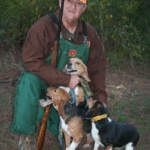
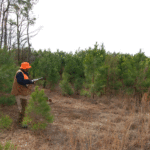
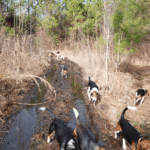
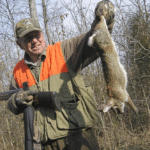
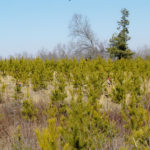
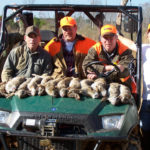
Be the first to comment